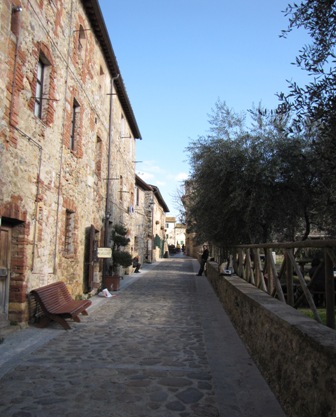Throughout the years, I have bought my cats what I have considered to be fantastically fun cat toys. “They’re going to love THIS one,” I would stubbornly repeat to myself. Well, “this one” usually joined the other discarded toys in a basket. I guess my idea of “great cat toy” doesn’t coincide with theirs. But even though I now almost never buy any cat toys (empty cardboard boxes are much more fun, you see), I do occasionally fall for a new, uhm, “great” toy.
My cats’ initial reaction is usually satisfactory. They will look at it, sniff it and even pretend to be interested for a moment or two. If I’m lucky, they will politely bat it around the room for a few seconds. Then they will look at me disdainfully, as though saying “is that IT? Well, phooey to you, you foolish tall creature,” and strut off, with their tails straight up in the air.
But there is one toy that has managed to keep my kitties’ interest alive. 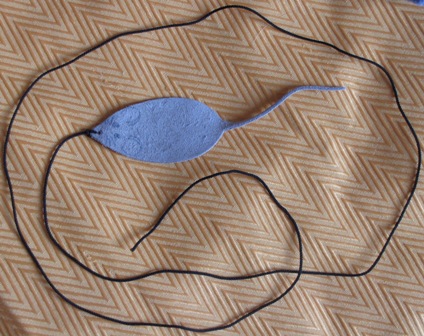 It’s a dumb little thing, really, something that you could easily make yourself: a small flat piece of leather shaped like a squished mouse (the shape, I suppose, is intended for us dumb humans; I’m sure cats wouldn’t notice if it were the outline of an elephant or a ladybug) and stuck on the end of a piece of string. I call it “mousie.” All of my cats have loved and enjoyed playing with mousie.
It’s a dumb little thing, really, something that you could easily make yourself: a small flat piece of leather shaped like a squished mouse (the shape, I suppose, is intended for us dumb humans; I’m sure cats wouldn’t notice if it were the outline of an elephant or a ladybug) and stuck on the end of a piece of string. I call it “mousie.” All of my cats have loved and enjoyed playing with mousie.
Peekaboo, my youngest kitty is no exception. She goes absolutely bonkers over mousie. At night, Peekaboo and I frequently play with mousie until I have had enough. At that point, I distract her somehow (not easy), then, unbeknownst to her or hah so I think!, I hastily shove mousie inside my pyjama pocket and try to look nonchalant. She usually spends a few minutes frantically hunting for mousie all over us and our bedroom but finally gives up and settles down in my lap. As soon as I get the chance, I sneak out of bed, slink over to the bathroom, lock myself inside and hide mousie on top of the bathroom cabinet. Out of sight. Phew. There is NO way Peekaboo can figure out where mousie is. Right?
Wrong.
For the past week or so, I have not had one single peaceful, er, session in the bathroom, not even to clean out the litter box. As soon as I shut the door, Peekaboo throws herself forcefully against it. She is actually able to open it (if it’s unlocked). When she cannot get in, though, she scratches frantically at the door and howls piteously…a hyena being slowly and painfully strangled could not possibly emit a more horrible noise…I am convinced my next door neighbours think that we torture our cats in atrocious ways…
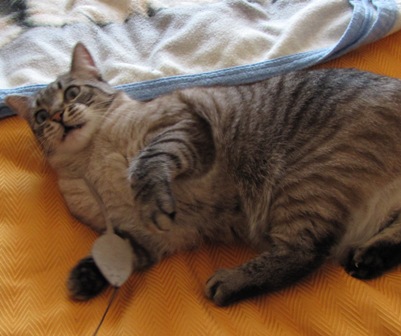 At first, I just couldn’t figure it out. She’d never before been interested in the bathroom. Besides, she doesn’t howl in front of the bathroom door when Stefano is inside, so what is her problem with MY being in there? I imagined it could possibly be a form of “separation anxiety.” Yes, I even got a bit emotional at the thought that my sweet little baby just couldn’t stand losing sight of her mommy and felt the need to be with me every instant of the day. Oh, I know, I know…
At first, I just couldn’t figure it out. She’d never before been interested in the bathroom. Besides, she doesn’t howl in front of the bathroom door when Stefano is inside, so what is her problem with MY being in there? I imagined it could possibly be a form of “separation anxiety.” Yes, I even got a bit emotional at the thought that my sweet little baby just couldn’t stand losing sight of her mommy and felt the need to be with me every instant of the day. Oh, I know, I know…
Then a faint light went on in my brain. Point 1: She must somehow have found out that mousie is inside the bathroom (and no, it is not a catnip toy). Point 2: I am always the one who plays mousie with her, not Stefano…so that is why she doesn’t care one whit about HIS being in the bathroom. Mystery solved.
But it gets worse. The cunning little creature is now trying to work out how to jump from the toilet to the top of mousie’s cabinet. Yesterday I caught her stretching her body upwards as far as she could, as if measuring the distance. When I walked into the bathroom, though, my petite drama queen threw herself on the floor, showing me her fuzzy little tummy and chirping seductively…as though not interested in anything but me…
Okay, clearly, it was time to change hiding places. Ah, no, wait, I had a better idea. Last night I put mousie on a bookshelf in my study, way up high, out of a cat’s reach, but making sure that Peekaboo had seen where it was. Will my kitty’s Sarah Bernhardt performances finally come to an end?
Hmmm, I doubt it. She has already let me know that she is on to me, that she is perfectly aware that mousie isn’t REALLY on my study bookshelf. “It’s still in the bathroom,” she informed me this morning with an affronted look. (But it’s not, it’s in my study, I swear!)
My (bathroom) peace has probably vanished…forever.
 Folly.”
Folly.” 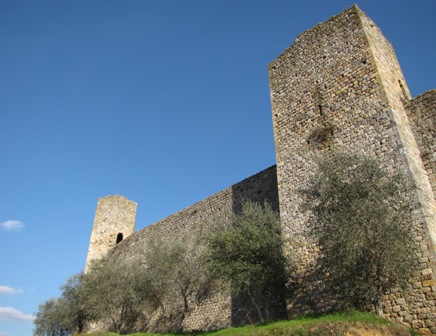
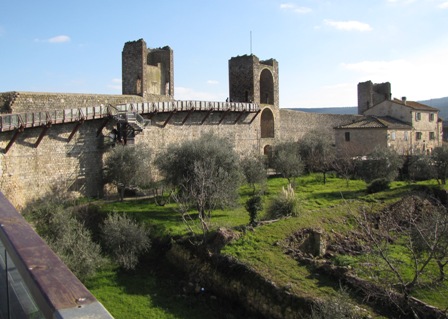 From Wikipedia I learned that the Italian poet Dante Alighieri used the towers of Monteriggioni “to evoke the sight of the ring of giants encircling the Infernal abyss”:
From Wikipedia I learned that the Italian poet Dante Alighieri used the towers of Monteriggioni “to evoke the sight of the ring of giants encircling the Infernal abyss”: 